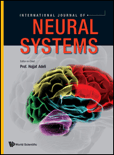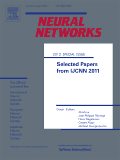
International Journal of Neural Systems
Scope & Guideline
Driving Excellence in Interdisciplinary Neural Systems Studies
Introduction
Aims and Scopes
- Neural Networks and Machine Learning:
The journal extensively covers the development and application of various neural network architectures, including deep learning, convolutional networks, and spiking neural networks, to solve complex problems in fields such as medical imaging, epilepsy detection, and cognitive neuroscience. - EEG and Neurophysiological Studies:
There is a strong emphasis on research involving electroencephalography (EEG) for understanding brain dynamics, seizure prediction, and emotional state recognition, showcasing the journal's commitment to exploring neural systems through direct physiological measurements. - Interdisciplinary Applications:
The journal promotes interdisciplinary research that applies neural systems to diverse areas including robotics, neuroprosthetics, and human-computer interaction, highlighting its role in advancing technology and improving healthcare outcomes. - Theoretical and Computational Models:
Research that develops theoretical frameworks and computational models to simulate neural processes and predict system behavior is a core focus, contributing to both foundational knowledge and applied methodologies in neural systems. - Semantic and Cognitive Processing:
The exploration of neural mechanisms underlying cognitive functions, including memory retrieval and emotion recognition, is a significant aspect, emphasizing the journal's relevance to cognitive neuroscience.
Trending and Emerging
- Federated Learning and Privacy-Preserving Techniques:
Recent papers are increasingly addressing federated learning, which allows for decentralized model training while preserving data privacy, a critical aspect in medical applications and sensitive data scenarios. - Spiking Neural Networks:
There is a marked rise in research focusing on spiking neural networks, which offer more biologically plausible models of computation compared to traditional neural networks, driving new insights in both neuroscience and artificial intelligence. - Integration of Multi-Modal Data:
The trend towards integrating multi-modal data sources, such as combining EEG with imaging techniques or behavioral data, is gaining momentum, reflecting the complexity of neural processes and the need for comprehensive analysis. - Real-Time and Adaptive Systems:
Research on real-time adaptive systems that can respond to dynamic environments is becoming more prevalent, particularly in applications like brain-computer interfaces and robotics, where immediate feedback is essential. - Explainable Artificial Intelligence (XAI):
An emerging focus on explainable AI techniques is evident, as researchers seek to enhance the transparency and interpretability of neural network models, particularly in clinical settings where understanding model decisions is critical.
Declining or Waning
- Traditional Machine Learning Approaches:
There has been a noticeable decrease in publications focused solely on conventional machine learning techniques, as the field shifts towards more sophisticated deep learning and neural network-based methodologies. - Basic Neuroscience Without Application:
Research purely centered on basic neuroscience concepts without direct application to technology or clinical practice seems to be less frequent, reflecting a trend towards more applied research that addresses real-world problems. - Static Modeling of Neural Systems:
There appears to be waning interest in static models of neural systems, as dynamic and adaptive models that account for variability and real-time processing gain more attention in the literature. - Non-deep Learning Techniques for Image Processing:
The exploration of non-deep learning techniques for image processing is decreasing, as advancements in deep learning have overshadowed traditional methods, leading to a preference for neural network-based solutions. - Single-Modal Studies:
Studies focusing on single-modal data analysis are becoming less common, with a growing emphasis on multimodal approaches that integrate various data types for more comprehensive insights.
Similar Journals

Neuromorphic Computing and Engineering
Connecting Minds to Shape the Future of ComputingNeuromorphic Computing and Engineering, published by IOP Publishing Ltd, stands as a premier open-access journal dedicated to the interdisciplinary field of neuromorphic computing, which integrates principles of artificial intelligence and hardware architecture. Launched in 2021, this journal plays a pivotal role in addressing the surge of research in intelligent systems mimicking neurobiological architectures, thus fostering innovation across various disciplines, including electrical and electronic engineering and materials science. With an impressive Q1 ranking across multiple categories in 2023, including Artificial Intelligence and Hardware and Architecture, it attracts a global audience eager to explore cutting-edge developments. The journal is positioned to deliver high-impact research, evident by its Scopus rankings—particularly its notable standing in Electrical and Electronic Engineering (Rank #217/797) and Electronic, Optical and Magnetic Materials (Rank #80/284). Neuromorphic Computing and Engineering not only contributes to the academic discourse but also provides an accessible platform for researchers, professionals, and students to disseminate and discuss their findings, reflecting the critical advancements in this rapidly evolving domain.

NEURAL PROCESSING LETTERS
Transforming Ideas into Impactful Research.NEURAL PROCESSING LETTERS, published by Springer, is a prestigious journal dedicated to the interdisciplinary fields of Artificial Intelligence, Computer Networks and Communications, Software Engineering, and Neuroscience. Established in 1994, the journal has built a solid reputation over the past decades, showcasing innovative research and developments that significantly contribute to the advancement of these dynamic areas. With a 2023 Scopus quartile ranking of Q2 in Artificial Intelligence and Computer Networks and Communications, and a Q3 ranking in Neuroscience, this journal occupies an important niche for professionals and researchers alike. The journal’s impact is further evidenced by its competitive Scopus ranks, positioning it within the top 60th percentile across its categories. Researchers looking for a platform to disseminate their findings in the intersection of technology and neuroscience will find NEURAL PROCESSING LETTERS an invaluable resource. For additional engagement and visibility, the journal supports various access options; however, it's important to note that it does not currently operate under an open access model. For submissions or queries, the journal can be reached at its headquarters in Dordrecht, Netherlands.

NEURAL NETWORKS
Unveiling the Future of Artificial Intelligence and CognitionNEURAL NETWORKS, an esteemed journal with the ISSN 0893-6080 and E-ISSN 1879-2782, is published by Pergamon-Elsevier Science Ltd in the United Kingdom. This influential journal, established in 1988 and continuing its publication through 2024, is recognized for its significant contributions to the fields of Artificial Intelligence and Cognitive Neuroscience, ranking in the Q1 category in both disciplines as of 2023. With a strong Scopus rank of #4/115 in Cognitive Neuroscience and #35/350 in Artificial Intelligence, and a commendable percentile of 96th and 90th respectively, NEURAL NETWORKS stands at the forefront of academic research. Researchers, professionals, and students can benefit from the journal's rigorous peer-review process and the dissemination of groundbreaking findings that shape understanding in artificial intelligence methodologies and their cognitive applications. While the journal currently operates under traditional access options, it serves as a vital resource in fostering innovations and cross-disciplinary collaboration.

Cognitive Computation and Systems
Fostering Collaboration in Cognitive Computation and Systems.Cognitive Computation and Systems is an innovative open-access journal published by Wiley, dedicated to advancing the fields of Artificial Intelligence, Cognitive Neuroscience, and Computer Science Applications. Based in the United Kingdom, this journal has established itself as a key resource for researchers, students, and professionals alike since its inception in 2019. With a focus on the convergence of cognitive theories and computational methodologies, Cognitive Computation and Systems aims to publish high-quality research that bridges holistic cognitive processing with algorithmic design. Although the journal is currently categorized in the lower quartiles of its fields, it provides a unique platform for disseminating pioneering ideas that can drive the vital intersection of computer vision, pattern recognition, and psychology. Scholars can take advantage of its open-access model, ensuring that research findings are freely available, thus promoting wider knowledge sharing and collaboration within these rapidly evolving domains. With its ambitious scope and commitment to quality, this journal is poised to make a significant impact in its respective fields.

Frontiers in Computational Neuroscience
Innovating the Future of Neuroscience with Computational Precision.Frontiers in Computational Neuroscience, published by FRONTIERS MEDIA SA, is a leading journal within the fields of neuroscience and computational biology, dedicated to advancing the understanding of the brain's complex functions through innovative computational methodologies. Since its establishment in 2007, this Open Access journal has provided a platform for researchers around the globe to share their groundbreaking findings, as evidenced by its continual presence in the academic conversation and a strong ranking within Scopus metrics (Rank #12/49 in Neuroscience - Neuroscience (miscellaneous) and Rank #63/97 in Cellular and Molecular Neuroscience). With an esteemed impact factor reflective of its quality and influence, and a commitment to providing freely accessible research, this journal plays a crucial role in fostering collaboration and knowledge dissemination among professionals, researchers, and students alike. Located in the scientific hub of Switzerland, it invites submissions from diverse perspectives, aiming to bridge the gap between computational models and biological insights through rigorous peer-reviewed publications.

Machine Intelligence Research
Elevating the Standards of Machine Intelligence ResearchMachine Intelligence Research is a premier academic journal published by SPRINGERNATURE, dedicated to advancing knowledge in the rapidly evolving fields of Artificial Intelligence, Applied Mathematics, and more. With its ISSN 2731-538X and E-ISSN 2731-5398, the journal is recognized for its impact, holding a distinguished position in various Q1 categories for 2023, including Computer Vision and Pattern Recognition and Control and Systems Engineering. Operating under an Open Access model, it ensures that groundbreaking research from China and around the world remains accessible to a global audience, promoting collaboration and innovation. As a beacon for researchers, professionals, and students, Machine Intelligence Research aims to disseminate high-quality research findings, innovative methodologies, and influential theories, thereby shaping the future landscapes of science and technology.

JOURNAL OF MATHEMATICAL IMAGING AND VISION
Elevating Research Standards in Mathematical ImagingJOURNAL OF MATHEMATICAL IMAGING AND VISION, published by Springer, stands as a significant platform for advancing the fields of applied mathematics, computer vision, and pattern recognition, among others. With an ISSN of 0924-9907 and an E-ISSN of 1573-7683, this esteemed journal is based in the Netherlands and has been contributing to the scholarly discourse since its inception in 1992, with a converged focus through 2024. It has achieved reputable standings within several quartiles, including Q2 rankings across applied mathematics, geometry and topology, and condensed matter physics, reflecting its impact and relevance. Notably, the journal ranks within the top 5% in Geometry and Topology and maintains robust standings in Statistics and Probability. The JOURNAL OF MATHEMATICAL IMAGING AND VISION is dedicated to publishing high-quality research that bridges theoretical perspectives with practical applications, making it an essential resource for researchers, professionals, and students who are exploring the cutting-edge of mathematical imaging and its interdisciplinary applications.

IMAGING SCIENCE JOURNAL
Navigating the Evolving Landscape of Imaging TechnologiesImaging Science Journal, published by Taylor & Francis Ltd, serves as a vital resource for researchers and professionals in the fields of computer vision, pattern recognition, and media technology. With an ISSN of 1368-2199 and an E-ISSN of 1743-131X, this journal has been fostering scholarly dialogue since its inception in 1997, with a converged content offering extending through 2024. Its categorization in Quartile 4 in Computer Vision and Pattern Recognition and Quartile 3 in Media Technology highlights its relevance and contributions to emerging trends in these domains. Although it ranks 36th in the Engineering - Media Technology category and 96th in Computer Science - Computer Vision and Pattern Recognition, its innovative research and insights continue to attract the attention of scholars dedicated to advancing knowledge at the intersection of imaging technologies. Offering versatile access options, this journal is essential for students, researchers, and professionals aiming to stay informed and engaged in the rapidly evolving landscape of imaging science.

Journal of Advanced Computational Intelligence and Intelligent Informatics
Innovating Insights in AI and InformaticsThe Journal of Advanced Computational Intelligence and Intelligent Informatics, published by FUJI TECHNOLOGY PRESS LTD, stands as a pivotal platform in the fields of Artificial Intelligence, Computer Vision, and Human-Computer Interaction. Established in 1997, this Open Access journal has been providing accessible insights into the latest advancements in computational intelligence and informatics since 2007. With its ISSN 1343-0130 and E-ISSN 1883-8014, this journal invites a diverse readership, including researchers, professionals, and students eager to explore innovative methodologies and applications. Despite its current Q4 ranking in the relevant categories, the journal remains committed to contributing valuable knowledge to the academic community and enhancing the global discourse in computational technologies. With its focus on fostering communication and collaboration among scholars, the journal plays an essential role in driving forward the understanding of intelligent systems and their applications in various domains.

JOURNAL OF COMPUTATIONAL NEUROSCIENCE
Advancing Insights in Computational NeuroscienceJOURNAL OF COMPUTATIONAL NEUROSCIENCE, published by Springer, stands at the intersection of cutting-edge technology and neuroscience research, offering a platform for scholars and practitioners to disseminate advancements in the computational modeling of neural systems. With an ISSN of 0929-5313 and E-ISSN 1573-6873, this esteemed journal has been fostering scientific dialogues since its inception in 1994, continuing to evolve through 2024. Although it currently holds a Q4 ranking in the categories of Cellular and Molecular Neuroscience, Cognitive Neuroscience, and Sensory Systems, it remains dedicated to enhancing its visibility and impact within the field. While the journal is not Open Access, it remains accessible to subscribers and institutions across the globe. By providing a conduit for innovative research and insights, the JOURNAL OF COMPUTATIONAL NEUROSCIENCE serves as an indispensable resource for researchers, professionals, and students keen on pushing the boundaries of understanding in neural computation and systems.